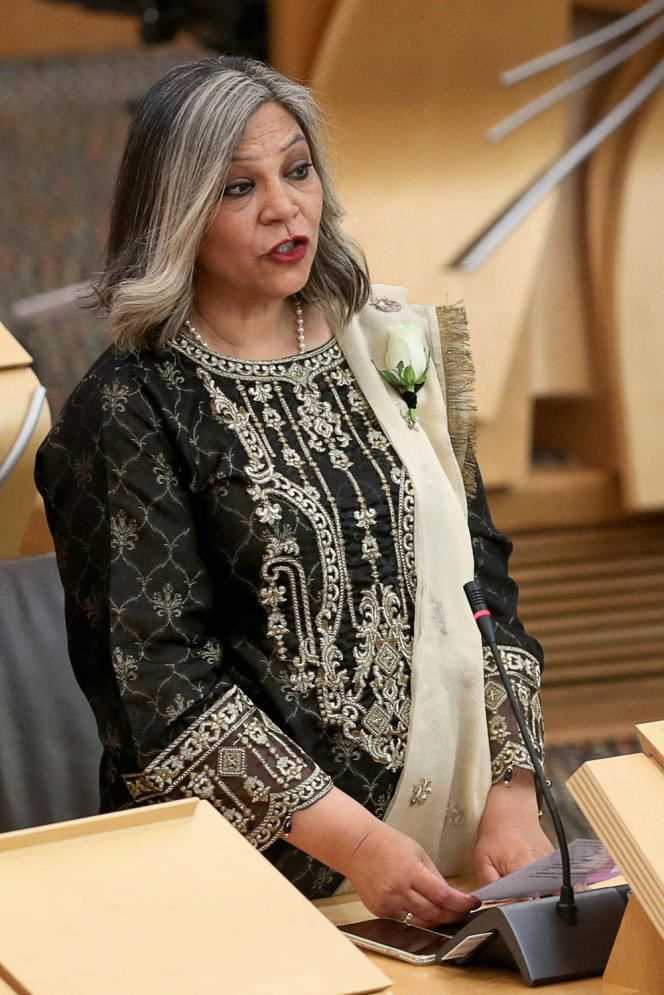At the call of their name, the elected officials rise one after the other and repeat after the President of the Chamber: “I swear loyalty and sincere allegiance to Her Majesty Queen Elizabeth II, her heirs and successors. “ Members of the independence party SNP hung a white rose on their buttonhole, Labor opted for a red rose, others sport a blue thistle. We catch a glimpse of a kilt or two, no more.
But it is not the folklore that jumps out on May 13, for the swearing in of the new members of the Scottish Parliament, largely renewed after the regional elections of May 6, it is the diversity of genres and languages. A real festival: we spoke English, of course, but also Gaelic, Urdu, German, Punjabi, Shona (spoken mainly in Zimbabwe) and even sign language.

SNP elected Kaukab Stewart, one of the very first women of color to enter Holyrood, was sworn in in traditional Pakistani dress. Her conservative colleague Pam Gosal, blue veil on her head, recited the Mool Mantar, a Sikh prayer. Pam Duncan-Glancy, elected Labor, remained in her wheelchair – she is the first disabled MP to enter the hemicycle.
“Scottish political parties have deliberately selected women, representatives of ethnic minorities and the disabled as head of lists. Neil McGarvey, political scientist
For its sixth legislature, twenty-one years after its creation, this chamber located in Edinburgh has never been so representative of Scottish society (5.4 million inhabitants), with 6 elected representatives from minorities, out of 129, and now 45% elected, one of the first hemicycles in the world to come so close to parity. It is a source of pride for the Scots and their Prime Minister, Nicola Sturgeon. In office since the end of 2014, the leader with strong feminist convictions was re-elected as head of the Scottish government, her party, the SNP, having won 64 of the 129 seats in Holyrood.
“Scottish political parties have deliberately selected women, representatives of ethnic minorities and the disabled as head of lists ”, explains Neil McGarvey, political scientist at Strathclyde University in Glasgow. This diversity and the participation rate (63.5%, the highest since 1999) reinforce the legitimacy of this assembly and constitute weighty arguments for the separatists, who ensure that they can govern themselves alone. They are calling for a new referendum on Scottish independence, seven years after the 2014 consultation and the victory of the no.
You have 55.1% of this article to read. The rest is for subscribers only.
